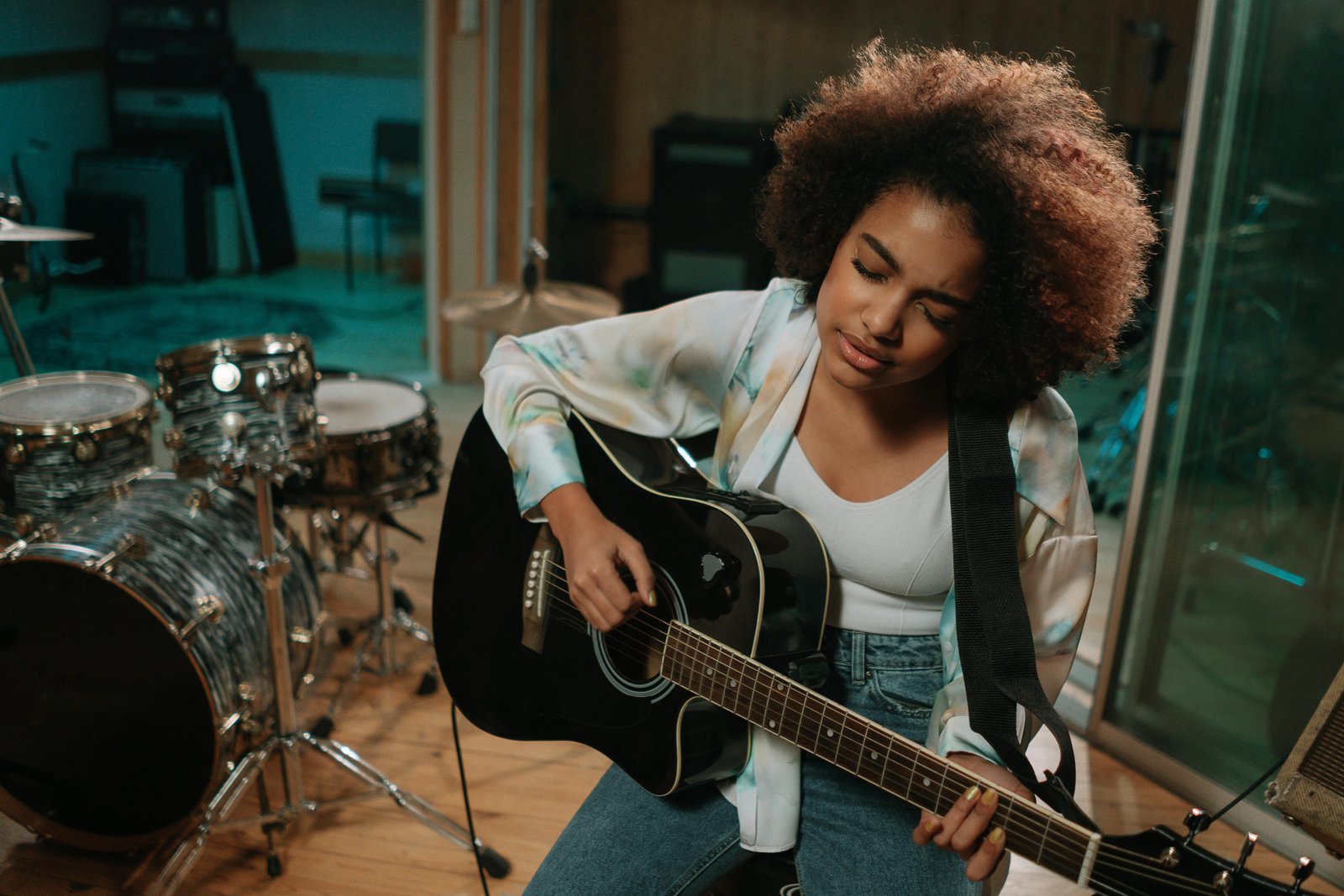🎸 Learning the Guitar: A Journey Through Strings, Rhythm, and Soul

Why Learn the Guitar?
The guitar is more than just an instrument. It’s a companion, a form of expression, and for many, a way to tell stories that words cannot capture. Whether you dream of strumming around a campfire, writing songs in your bedroom, or playing on stage, the guitar is a beautiful place to start your musical journey.
But like any craft, learning the guitar takes patience, passion, and the right guidance. This article is not just a tutorial—it’s a map for the journey, covering mindset, technique, practice methods, and emotional connection to music.
🎯 Chapter 1: Getting Started – Your First Steps
🪕 Choosing Your First Guitar
Start with an acoustic or classical guitar if you’re a beginner. They're simple, portable, and perfect for developing finger strength. Don’t spend too much—what matters most is comfort.
Checklist:
-
Nylon strings (easier on fingers)
-
Medium neck size
-
Tuning pegs that hold well
-
Comfortable to hold when sitting
🎸 Learn the Parts of the Guitar
-
Headstock: Where the tuning pegs are.
-
Neck: The long part with the frets.
-
Fretboard: Where you press your fingers.
-
Body: Where you strum or pick.
-
Soundhole: Amplifies sound (acoustic guitar).
Knowing your instrument builds respect and connection with it.
🎵 Chapter 2: Learning to Play – The Foundation
🎼 Holding the Guitar Properly
-
Sit up straight, shoulders relaxed.
-
Guitar body should rest on your right thigh (for right-handers).
-
Left hand curves gently over the neck.
Avoid slouching—it affects both sound and hand health.
🖐️ Finger Numbering
-
Thumb: T
-
Index: 1
-
Middle: 2
-
Ring: 3
-
Pinky: 4
This system will help you read chord charts and exercises.
🎹 Chapter 3: Understanding Chords – Your First Music
Chords are the backbone of modern music. They are combinations of notes played together that form the harmony of a song.
🎸 Start with These 5 Easy Chords:
-
C Major
-
G Major
-
D Major
-
E Minor
-
A Minor
Learn how to switch between them slowly and cleanly. Your fingers will hurt at first—it’s normal! With consistency, calluses will develop and it gets easier.
Pro Tip: Practice each chord for 5 minutes a day before combining them.
⏱️ Chapter 4: Rhythm and Strumming
Strumming is what brings life and movement to the chords.
🪕 Basic Strumming Pattern:
Down - Down - Up - Up - Down - Up
Use your wrist—not your whole arm—and keep it relaxed. Count in your head or out loud (“1-2-and-4-and”) to stay in rhythm.
Try this with just one chord (like E minor) until it feels natural.
🧠 Chapter 5: How to Practice Effectively
Learning the guitar is not about doing it perfectly, but consistently.
✅ The 20-Minute Rule
Practice 20 minutes a day instead of 2 hours once a week. Your brain and fingers need repetition and rest.
Structure:
-
5 min warm-up (finger stretches, tuning)
-
10 min chords
-
5 min rhythm or song practice
Use a metronome app. It will train your internal timing—very important for playing with others.
📓 Keep a Guitar Journal
Write down what you practiced, what was difficult, and your goals for tomorrow. Progress becomes visible when you track it.
🎶 Chapter 6: Learning Songs – Why It’s the Best Teacher
As soon as you can play 3 chords, learn your first full song. Choose something simple, emotional, and familiar.
Great beginner songs:
-
“Knockin’ on Heaven’s Door” – Bob Dylan
-
“Let It Be” – The Beatles
-
“Stand By Me” – Ben E. King
Learning real songs builds motivation and helps you understand song structure naturally: verses, choruses, bridges, and rhythm changes.
🎤 Chapter 7: Singing While Playing (Optional But Powerful)
If you sing, start with very slow repetition of each verse while holding the chords. Start with one chord per line, then match the rhythm gradually.
Tips:
-
Memorize lyrics first.
-
Hum along before singing.
-
Use a capo to match your vocal range.
🎧 Chapter 8: Ear Training and Emotional Expression
Music isn’t just mechanical. A great guitarist knows how to listen deeply.
Try this:
-
Listen to your favorite song.
-
Identify the chord changes.
-
Try to hum the melody.
-
Find the notes on your guitar by ear.
This builds emotional connection and prepares you to improvise and compose your own music.
🧘♂️ Chapter 9: Patience, Mindset, and Enjoying the Process
Your fingers will get tired. Your brain will feel slow. You’ll mess up 100 times. That’s good.
Because each mistake is a step forward. Learning guitar is like learning to speak a new language. You start with single words (notes), then short phrases (chords), then full conversations (songs).
Don’t compare your journey to others. Compare yourself to who you were last month.
🔥 Chapter 10: Going Further – Next Steps
Once you're confident with chords and rhythm:
-
Learn barre chords (F major, B minor)
-
Understand scales (major and pentatonic)
-
Explore fingerpicking
-
Write your first song
-
Play with others
Join a jam session, record yourself, or play for a friend. Music is meant to be shared.
🎁 Final Words: The Guitar is Your Voice
The guitar is not just wood and strings—it’s a mirror of who you are. On good days and bad, it listens without judgment. It lets you pour out your feelings in sound.
Learn to play, and you’ll discover something even more powerful:
You’re not just learning music.
You’re learning yourself.
